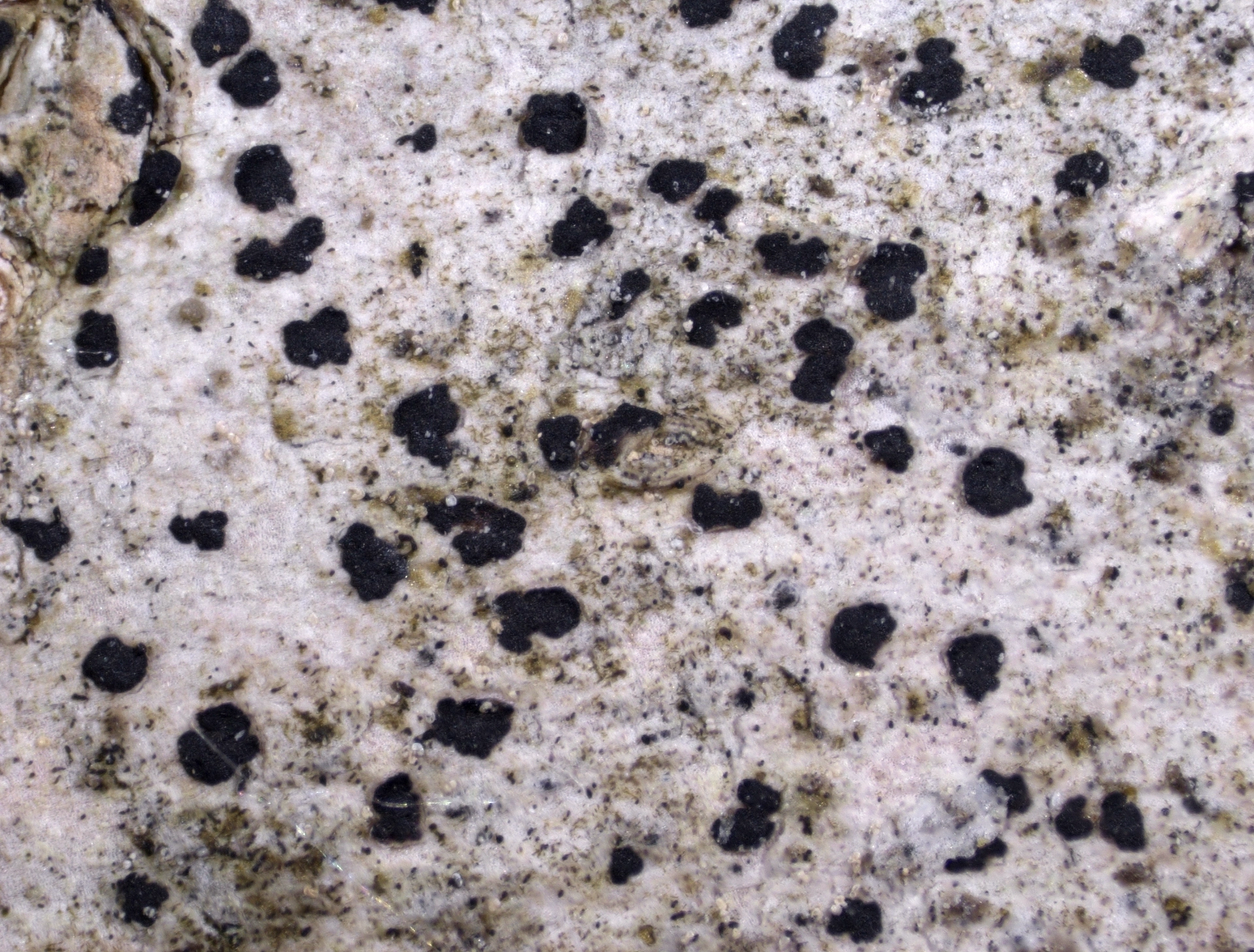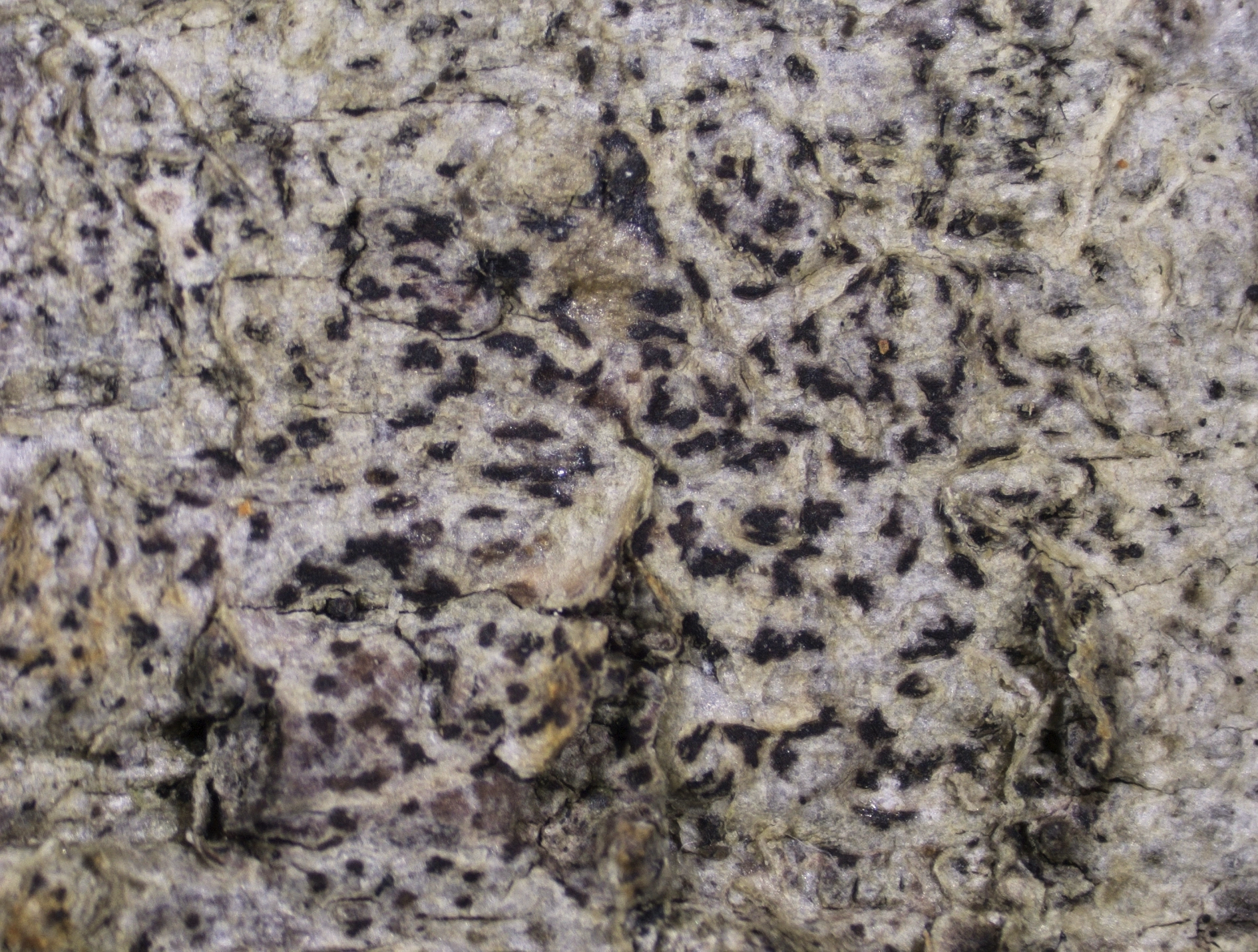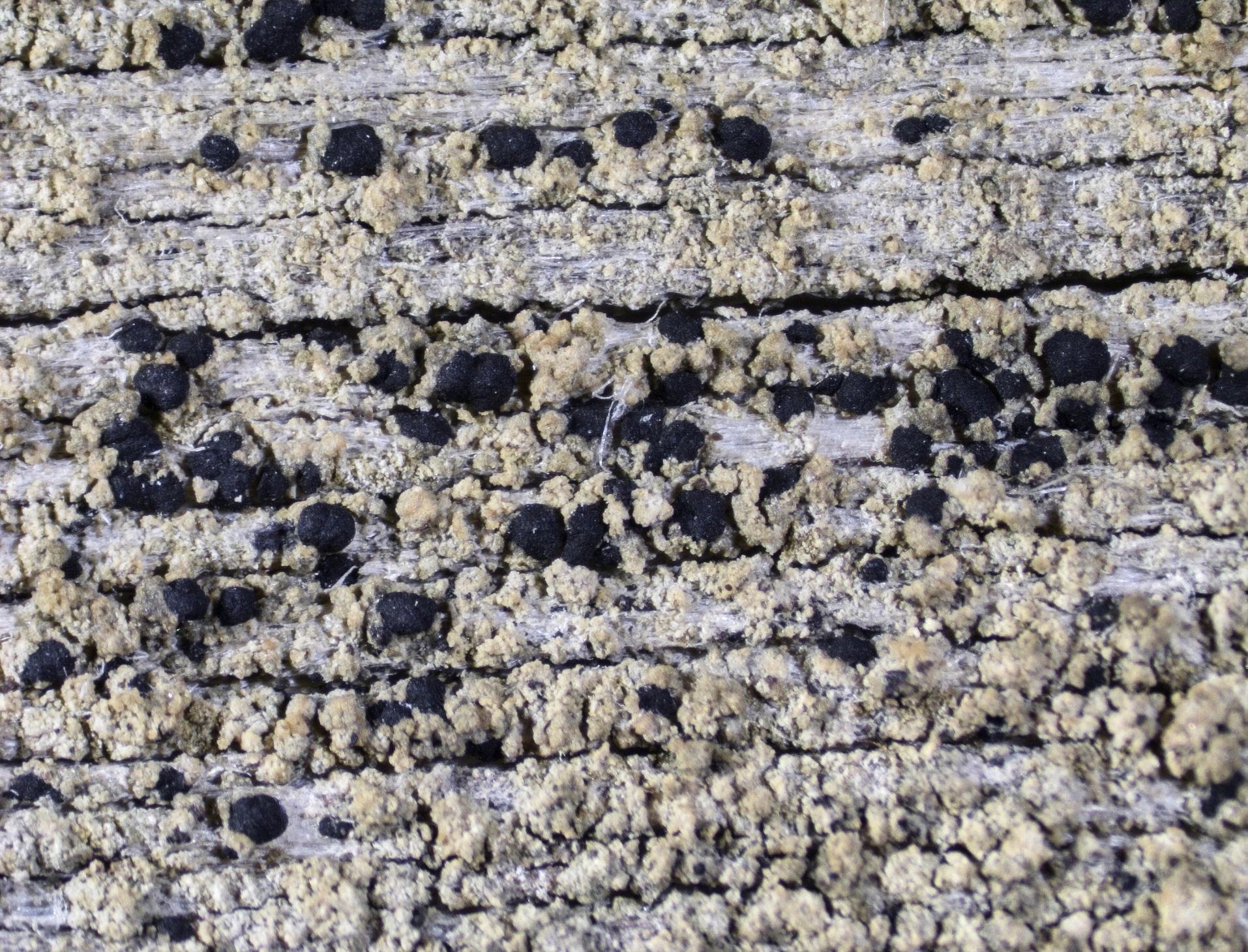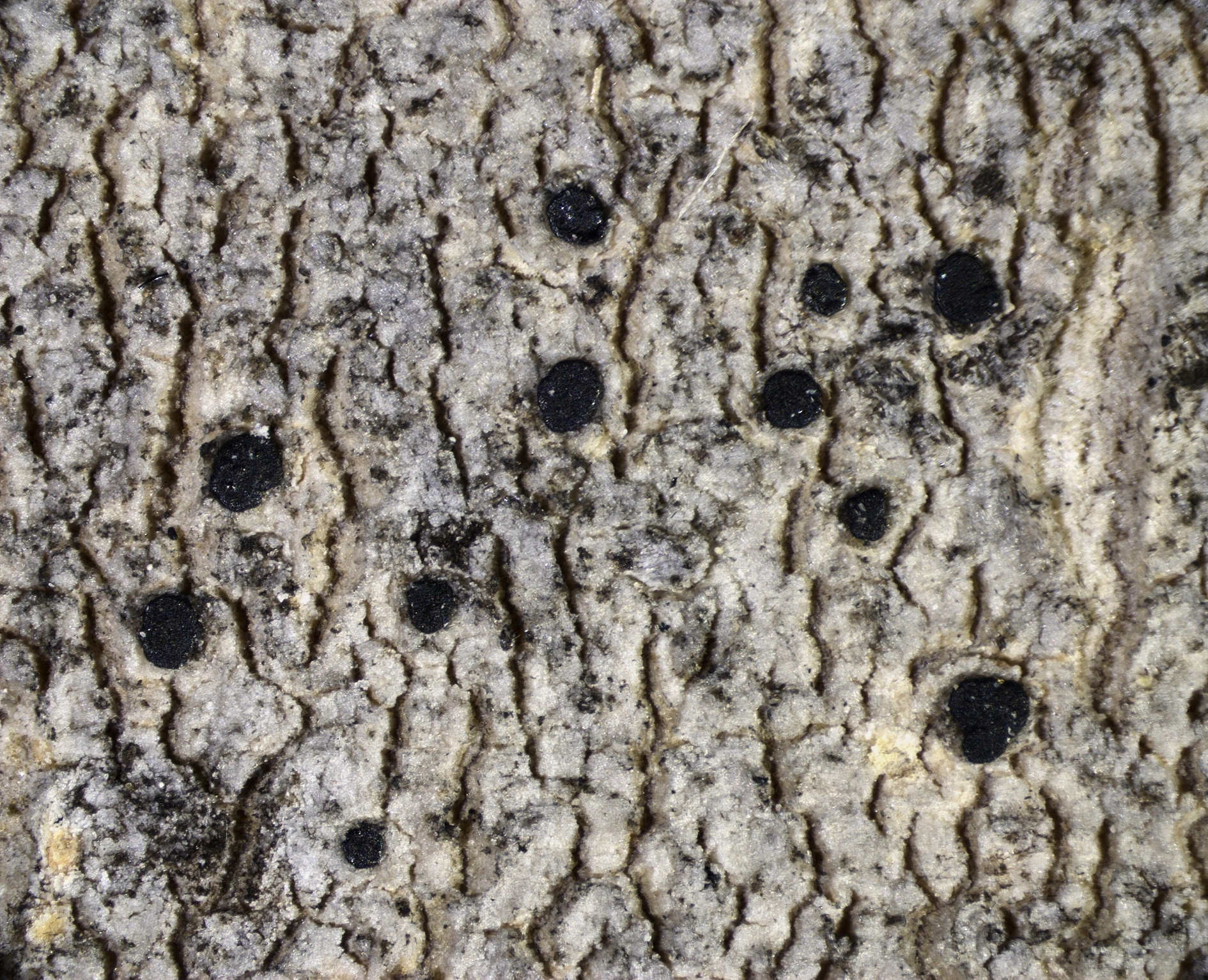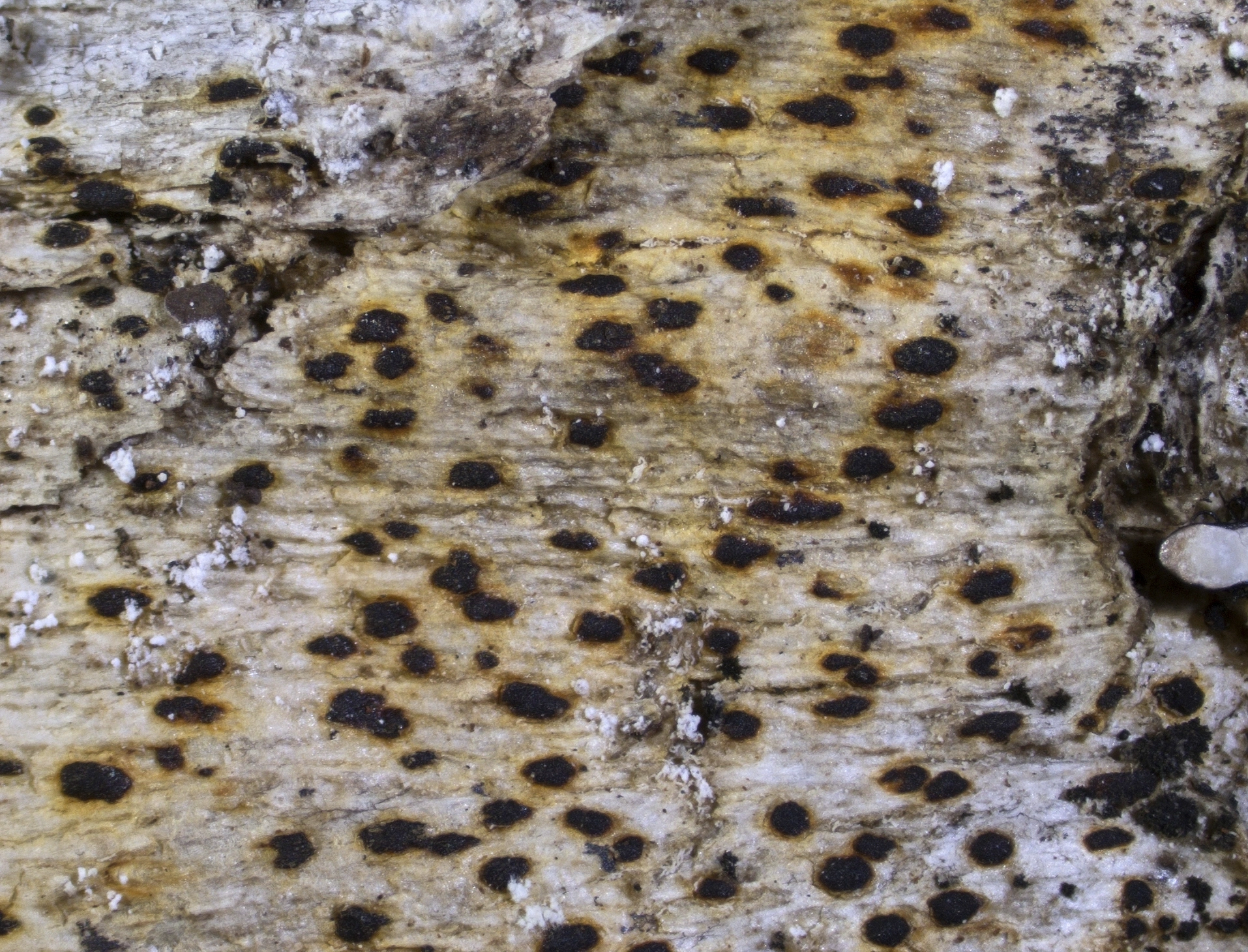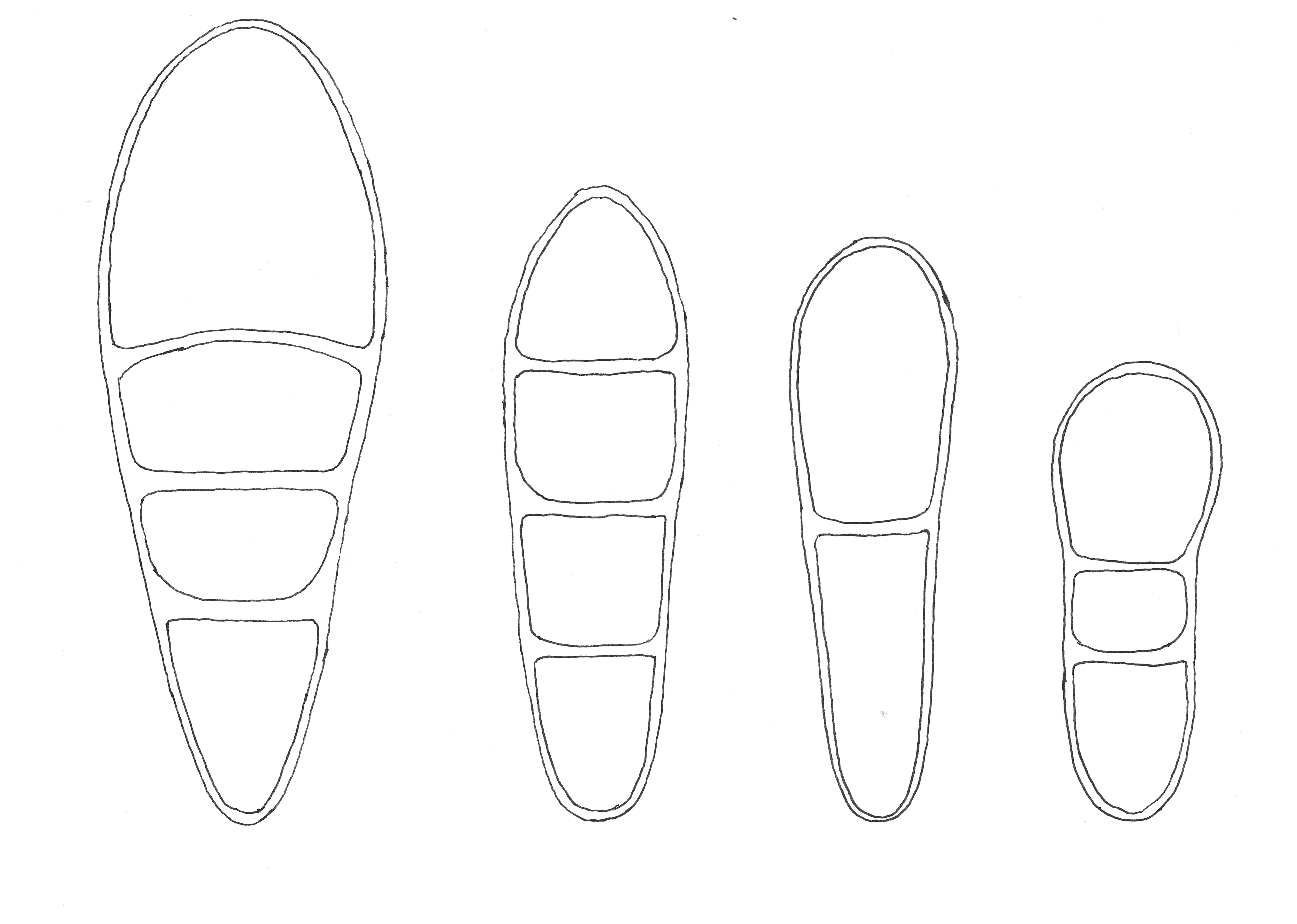Arthonia
Arthonia is a heterogeneous genus consisting of approximately 500 species worldwide. Forty-seven of these species have been found in Norway. The genus is lichenized, saprophytic or lichenicolous. In its traditional definition, Arthonia differs from Arthothelium by transversely septate versus muriform spores.
- Innhold
- Description
- Ecology
- Remarks
Description
Thallus
The Norwegian lichenized Arthonia species treated here have an indistinct to well-developed thallus that is immersed in the host bark or superficial. The color varies from whitish to pale grey, olive-grey, grey-brown or fawn. The thallus surface is usually matt or weakly glossy. The margin is either not determinate or delimited by a thin brown prothallus line when in contact with other lichens. The photobionts belong to the family Trentepohliaceae or they are a species of chlorococcoid algae.
Fruitbodies
The apothecia are variously shaped. Most species have maculate apothecia that are often irregularly rounded, elliptical or lobed, or they are clearly elongated, branched or star-shaped. The apothecia are flat or slightly convex, and level with the thallus surface to raised. The color varies from orange-brown to brownish-black or pure black. The apothecia are well-delimited but lack a clearly defined margin.
A small group of species that includes A. apatetica, A. fusca, A. ligniariella, A. mediella, and A. patellulata have brownish black or black apothecia that are more or less convex, (irregularly) rounded and sitting on the thallus. Outwardly, they may resemble small species of the unrelated lichen genera Micarea or Lecidea s.lat. Other species including A. atra, A. calcarea and A. excipienda have lirellate apothecia with a distinct dark brown to black margin and an exposed to slit-like apothecia disc. They outwardly resemble species of the lichen genera Opegrapha (A. atra, A. calcarea) or Melaspilea (A. excipienda) to which they have been assigned until recently.
The hymenium of the Norwegian Arthonia species is unpigmented to pale brown, pale reddish brown or greenish, or it is orange to red in color.
The epithecium is either not clearly differentiated from the hymenium, or it is pale to dark reddish brown, greenish brown or orange-red in color. It is composed of the branched tips of the paraphysoids that are either more or less perpendicular or extend horizontally along the surface of the hymenium. The tips are unpigmented or pigmented, and they are often enlarged. Distinct pigment caps or plaques are attached to the tips of the paraphysoids in several species.
The hypothecium varies from unpigmented to dark brown or orange-red in color.
The asci are of the Arthonia-type and contain 8 spores.
The spores are oblong to obovoid or slipper-shaped and divided by 1 to several transverse septa. The spores are persistently unpigmented or they have a brown pigmentation and a granular ornamentation when old. The apical spore cell in some species is clearly enlarged.
Anamorph
Pycnidia have been found in several species. They are reddish brown, dark brown or black, 40–100 μm in diameter and are immersed in the thallus to slightly raised. The wall is dark brown, red-brown or olive-brown. The conidia are rod-shaped, 3–9 × 0.5–2 μm large, and straight or slightly curved.
Chemistry
Most Norwegian Arthonia species lack lichen secondary compounds in thallus or apothecia. Some species contain orange to red anthraquinone pigments in the apothecia (rarely in the thallus) that change color to purple in K+ solution. Skyrin, O-methylhaematommone and unidentified anthraquinones are reported from Arthonia species in Norway.
The hymenial gels react I+ red, I+ blue or I+ red mottled with blue, and KI+ blue. A KI+ blue ring structure in the tholus of the asci is present in most species.
The brown pigments in the apothecia and in the wall of the pycnidia are either unchanged or they change color to olive-brown or greenish in K solution.
Spore drawings, from left to right: Arthonia stellaris, Arthonia radiata, Arthonia apatetica and Arthonia helvola. The spores of Arthonia helvola are 10 µm long.
Ecology
Arthonia has a worldwide distribution from tropical to arctic regions and from see-level to high alpine ecosystems. Most species are found in oceanic to suboceanic climatic conditions or in habitats with a humid microclimate. The majority of Arthonia species are epiphytes, but the genus also includes species growing on rock substrates, soils or bryophytes. A large number of species are specialized growers on other lichens. These species are not treated here.
Most lichenized Arthonia in Norway are epiphytes at low to mid elevations. The genus is found in forest communities and woodlands throughout Norway. Free-standing trees for example in alleys or pastures are less often colonized. Deciduous trees with smooth to rough bark are common substrates. Coniferous trees including Norway spruce (Picea abies) and Scots Pine (Pinus sylvestris) are colonized in addition to deciduous trees by A. arthonioides, A. didyma, A. ligniariella, A. mediella and A. vinosa. Two primarily epiphytic species in Norway, Arthonia arthonioides and A. mediella, occasionally occur on sheltered rock faces or over rock-dwelling bryophytes.
Arthonia calcarea, A. fusca and A. granitophila are strictly saxicolous species. Arthonia granitophila is a species of shady and sheltered siliceous rock faces in forested habitats. Arthonia calcarea and A. fusca prefer base-rich rocks and are additionally found on anthropogenic substrates like mortar, roof tiles or murals. Another strictly saxicolous species, A. phaeobaea, is confined to the supralittoral zone of rich to slightly calcareous coastal rocks.
Remarks
Arthonia as currently understood is heterogeneous and not clearly distinguished from the related genus Arthothelium. For purely practical reasons, we here adopt the traditional definition of the genus that distinguishes Arthonia from Arthothelium by transversely septate instead of muriform spores. Both genera are expected to split in several natural units upon further revision, some of which will include species with both muriform and transversely-septate spores.
Several of the species treated here in Arthonia are similar in morphology to the genus Bryostigma. Phylogenetic data further show that A. apatetica, A. fusca and A. patellulata are closely related to Bryostigma muscigenum. This group additionally includes a large number of lichen-growing species in Norway. We keep all those species in Arthonia for the time being, pending a much-needed revision of this lineage of the Arthoniaceae.
Literature
Cannon P, Ertz D, Frisch A, Aptroot A, Chambers S, Coppins BJ, Sanderson N, Simkin J and Wolseley P (2020). Arthoniales: Arthoniaceae. Revisions of British and Irish Lichens 1: 1–48.
Frisch A, Thor G, Ertz D and Grube M (2014). The Arthonialean challenge: restructuring Arthoniaceae. Taxon 63: 727–744.
Sundin R (1999). Phylogenetic and taxonomic studies within Arthonia Ach. (Ascomycetes, Arthoniales). Doctoral dissertation, Department of Bot., Stockholm University.
Sundin R and Tehler A (1998). Phylogenetic studies of the genus Arthonia. Lichenologist 30: 381–413.
